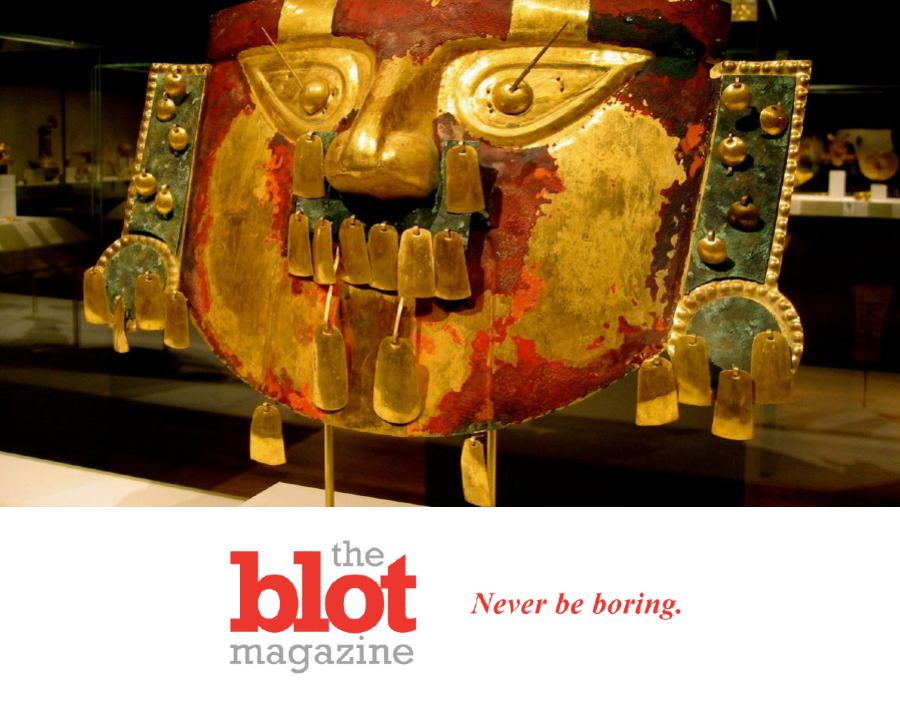
SCARY: ANCIENT GOLD MASK FROM PERU WAS PAINTED WITH HUMAN BLOOD
Art can be a little strange. Well, ok, it can be a lot strange. But scary is the word to apply to this ancient artistic news. A 1,000 year old gold mask from Peru has been a subject of study for a bit of time. Archeologists work hard to find these artifacts. But then they have to work even harder to hope to understand them. That’s certainly the case here. Because this old gold mask was covered in red paint, and figuring out the ingredients proved to be a challenge. And they just discovered one key, and shocking ingredient: human blood.
Read More: Humans Have Been Smoking Tobacco For At Least 12,300 Years?
AT FIRST, ARCHEOLOGISTS WERE CONFUSED, ONLY TO FIND HUMAN BLOOD WAS KEY INGREDIENT
So yes, that’s pretty spooky to say the least. But it fits with what we know from the culture of the mask’s creators. Today we know them as the Sicán. This mask was buried 1,000 years ago as a burial mask, part of the death rites of the Sicán culture. But if you think human blood painted on a funerary gold mask is spooky, wait for more below. At first researchers were confused when they tested the paint’s proteomics, which really means what kind of proteins were in it. One of the results was chimpanzee, which made no sense as there are no chimps in South America. But when they tested it against human blood, bingo! A perfect match.
Related: Testicle Bath Inventor Wins Germany’s James Dyson Award
BESIDES HUMAN BLOOD PAINTED GOLD MASK, TOMB HELD SOMETHING EVEN SCARIER
The red color came from cinnabar, something we only discovered a little over 3 decades ago. And human blood as well as bird egg was what the funerary preparers used to “bind” the paint for the dead Sicán elite’s funerary gold mask. But here’s where it gets kind of scary. In the same tomb, they also found the bodies of 2 women in birthing and midwifing positions, respectively. So in other words, these women were sacrificed just to be props in the grave, with the hope they would bring the dead Sicán elite back to life. As in, rebirth.
Sure, the Sicán were by no means unique in killing extra people for the burial of an important figure. But using their life force, or blood, as a paint binder gives me the creeps!





